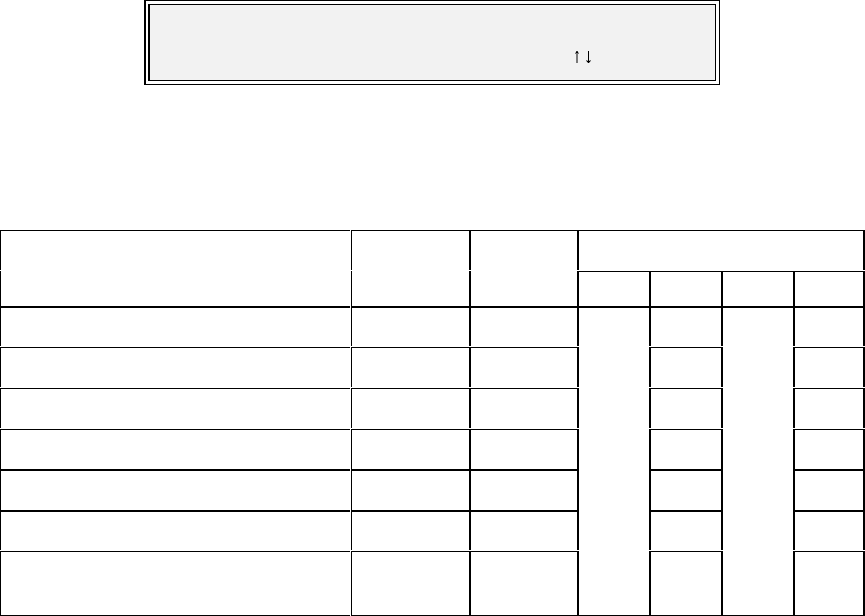
P300H P300 Series Modem Installation and Operating Handbook Page 67
Select Turbo Mode/Code rate, then (YES)
[0.750 Industry de-facto 3/4 rate]
Change, Tx/Rx, Mod/Demod, FEC Rate Menu (Turbo)
For Turbo FEC the FEC rate selection screen is as follows:
The Turbo FEC code rate may be selected from the scroll list of preset rates displayed on the screen.
pressing YES will accept the current FEC rate and return to the Change, Tx, Modulator menu. This list can
contain up to 31 different rates, but currently only the following are defined:
Screen Description Exact Delay Modulation Schemes from
code rate (bits) *
BPSK QPSK OQPSK 8PSK
“0.3125 Industry de-facto 5/16 rate” 0.3125 2662 V3.57 n/a
V3.57 V3.57
“0.477 Industry de-facto 21/44 rate” 21/44 4056 V3.57 n/a
"0.493 Paradise ½ rate" 2028/4116 4056 V3.40 n/a
“0.666 Paradise 2/3 rate 2499/3748 4998 V3.57 n/a
"0.750 Industry de-facto 3/4 rate" 0.750 4446 V3.40 n/a
"0.789 Paradise 3/4 rate" 3249/4116 6498 V3.40 n/a
"0.875 Paradise 7/8 rate" ** 0.875 450
(Low Latency) (yes 450)
V3.40 n/a
* Note on processing delay. Use the data rate before the FEC to determine the delay in milliseconds from
the delay in bits. For example at 1Mbps using Rate 0.789 Turbo FEC, the FEC delay is (6498/1000000)
seconds, which is 6.5ms.
** Note on Low Latency 7/8 Rate Turbo: As Turbo FEC schemes go this is a relatively poor performer. BUT
it does provide about a 1dB performance improvement over 7/8 rate Viterbi, and for links where the
transponder space is fixed to accommodate a 7/8 Viterbi coded link, switching from Viterbi to Turbo will give
a useable 1dB improvement. It also provides significantly lower latency than subsequent Turbo schemes
(which offer a better 7/8 rate performance at the cost of significant latency). If you’re stuck with a channel
that can only accommodate 7/8 Rate FEC, then this will give you an extra dB over using Viterbi.


















